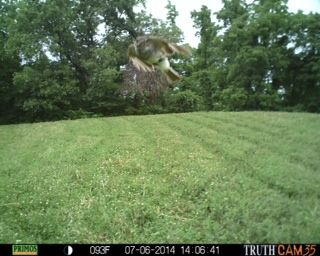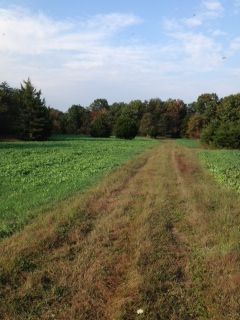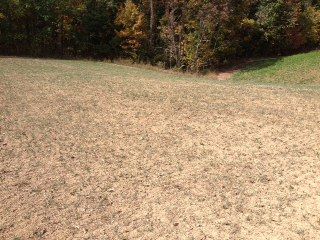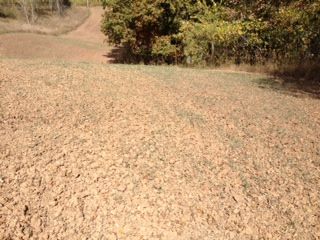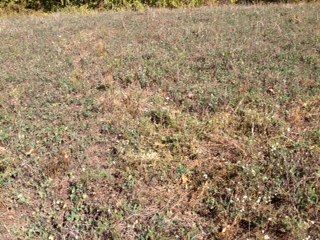dbltree
Super Moderator
September 23rd, 2014
Jesse notill drilled oats and annual clovers Berseem and Crimson clover into this plot this past spring. In late August he killed the clovers with 1 quart glyphosate and then drilled the Dbltree /LC cereal grain mix into the killed clovers.
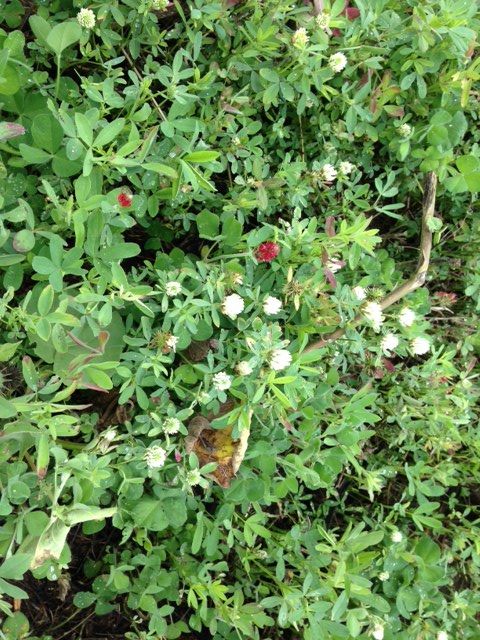
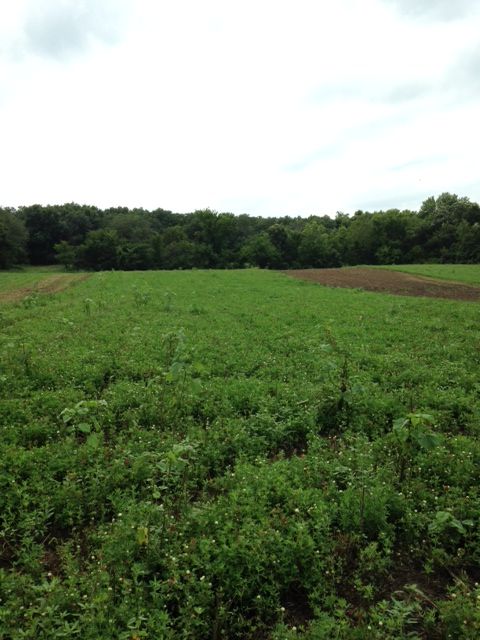
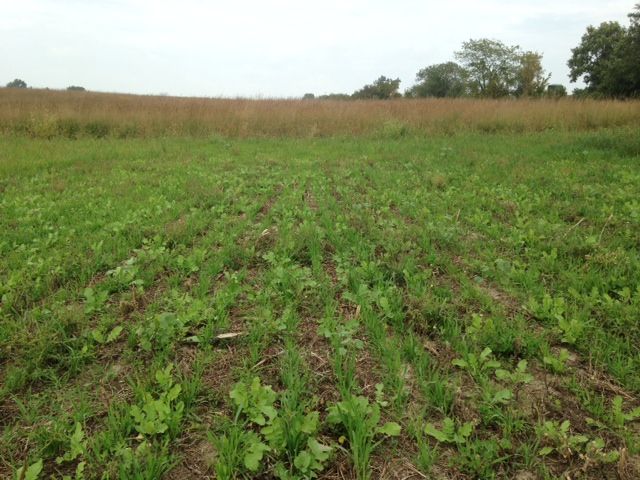
The clovers can provide 70-100 # or more nitrogen per acre which is plenty to keep the winter rye, oats and forage radish growing. Note grazing of oats, winter peas still growing
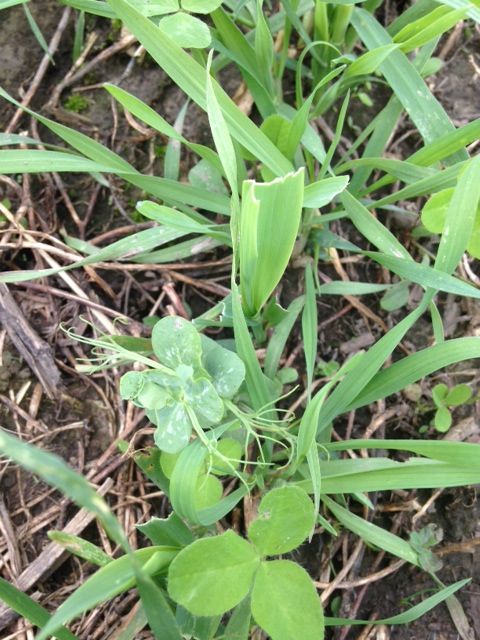
Nitrogen keeps the plant's lush, green and very palatable which is important when competing with surrounding crops. Forage radish with baby red clover
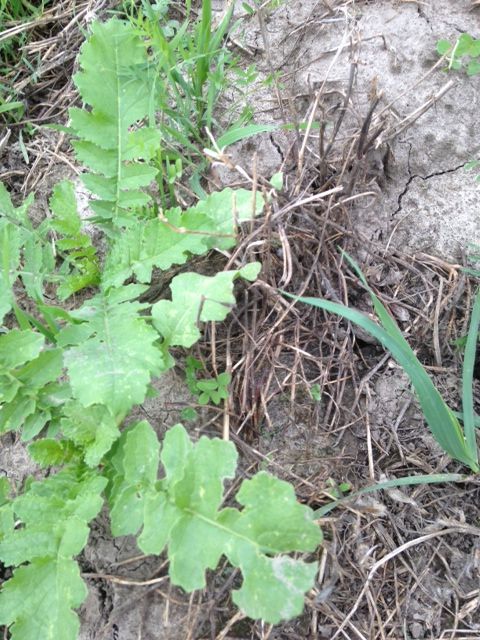
Everything has been notill drilled leaving residue on top to slowly break down and increase organic matter. The drill places large seeds roughly an inch deep and small seed between 1/8 and 1/4" deep but with good moisture the larger seeds can be much shallower. With the exception of oats the rest can even be broadcast on the surface with plenty of rain. Rolling or mowing a cover crop after broadcasting seed will help increase germination.
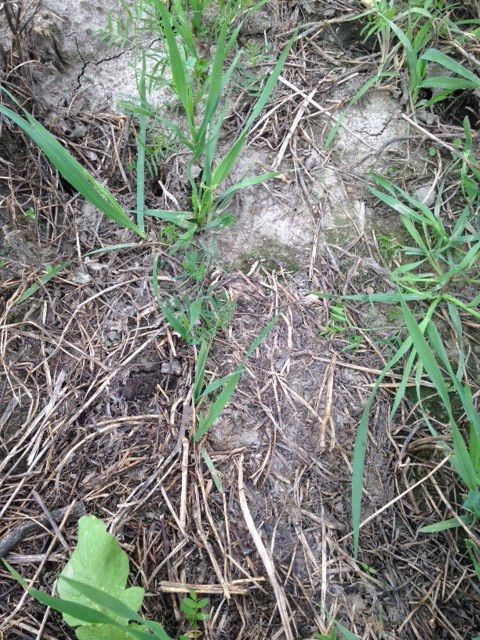
This mix shown here creates an irresistible salad bar that will keep deer fed from mid September through early May. Each crop species contributes in a different way at different time's to both whitetails and soil building.
Hairy vetch evident here and some burnt crimson clover from spring planting
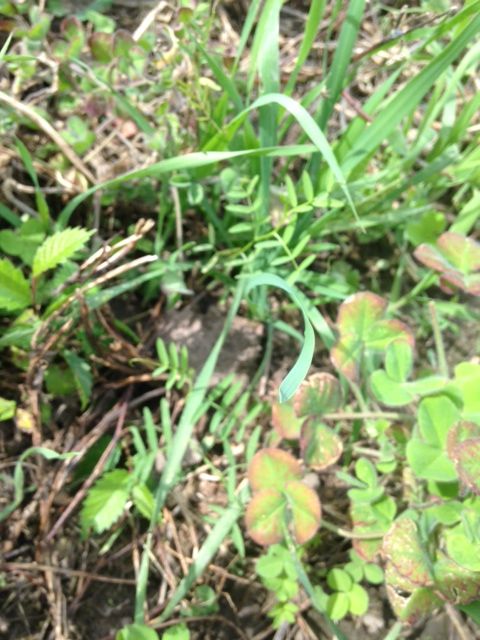
The cool thing about this is no tillage and the longer Jess can use this planting method the faster he can build soils. The down side is using herbicide but it may be possible to mow the clovers close, notill drill the seed and allow fall freezes to kill the annual clovers. I encourage each of you to experiment with your equipment and these crop rotations and see how you can minimize both use of tillage and herbicides.
Jesse notill drilled oats and annual clovers Berseem and Crimson clover into this plot this past spring. In late August he killed the clovers with 1 quart glyphosate and then drilled the Dbltree /LC cereal grain mix into the killed clovers.



The clovers can provide 70-100 # or more nitrogen per acre which is plenty to keep the winter rye, oats and forage radish growing. Note grazing of oats, winter peas still growing

Nitrogen keeps the plant's lush, green and very palatable which is important when competing with surrounding crops. Forage radish with baby red clover

Everything has been notill drilled leaving residue on top to slowly break down and increase organic matter. The drill places large seeds roughly an inch deep and small seed between 1/8 and 1/4" deep but with good moisture the larger seeds can be much shallower. With the exception of oats the rest can even be broadcast on the surface with plenty of rain. Rolling or mowing a cover crop after broadcasting seed will help increase germination.

This mix shown here creates an irresistible salad bar that will keep deer fed from mid September through early May. Each crop species contributes in a different way at different time's to both whitetails and soil building.
Hairy vetch evident here and some burnt crimson clover from spring planting

The cool thing about this is no tillage and the longer Jess can use this planting method the faster he can build soils. The down side is using herbicide but it may be possible to mow the clovers close, notill drill the seed and allow fall freezes to kill the annual clovers. I encourage each of you to experiment with your equipment and these crop rotations and see how you can minimize both use of tillage and herbicides.
Plant ALL in one plot in strips or blocks
Alice, Kopu II, Durana (or comparable) white clover 10% of plot, sow at 6#'s per acre with the rye combination in the fall or in the spring with oats and berseem clover. Correct Ph and P&K with soil tests
Brassicas in 45% of plot
Purple Top Turnips 3#
Dwarf Essex Rape 2#
GroundHog Forage radish 5#
Plant in mid to late July in most Midwest states, or 60-90 days before your first killing frost, Use 200#'s of 46-0-0 urea and 400#'s of 6-28-28 per acre. Follow the dead brassicas with oats and berseem or crimson clover in mid spring at 60#'s oats and 12-15#'s berseem clover and/or crimson and/or 50#'s of chickling vetch)
Cereal Grain combo in 45% of plot...we use 50# each rye, oats and peas along with radish and clover seed all planted in half of each feeding area
Winter rye 50-80#'s per acre (56#'s = a bushel)
Spring oats 50-120#'s per acre (32#'s = a bushel)
Frostmaster Winter Peas or 4010/6040 Forage peas 20-80#'s per acre
Red Clover 8-12#'s per acre or white clover at 6#'s per acre (or 20-40 pounds hairy vetch and 20-30#'s crimson clover on sandy soils)
Groundhog Forage Radish 5#'s per acre
Plant in late August to early September, if following well fertilized brassicas use 100 - 200#'s of urea, if starting a new plot add 400#'s of 6-28-28 but for best results soil test and add only what is necessary.
Rotate the brassicas and rye combo each year


